

We write Stevens history

Recent installations of anti-bird collision technology on campus promote wildlife conservation
BY AVA WANG, OUTREACH CHAIR
This past February, The Stute published “Stevens’ invisible threat to bird safety”, containing an interview with Hoboken resident Jeffrey Train, and a discussion of the dangers large glass structures pose to Hoboken’s avian wildlife. This follow up article aims to summarize the updates campus has observed in the time since.
In early July 2024, installation of transparent dots were observed on the free-standing glass panels between the North and South UCC towers, an area also referred to as the UCC breezeway. This decal installation was confirmed to be Bird Divert technology in an interview with the Assistant Vice President for Strategic Communication and Public Relations, Kristen Daily. Bird Divert is
New Jersey-based company, endorsed by the American Bird Conservancy and the Audubon Society, which develops optically clear, anti-bird collision solutions for both residential and commercial glass. Bird Divert’s anti bird-collision marker technology employs a key difference in optical capability between humans and birds to accomplish a proven (Rössler and Zuna-Kratky, 2004; 2007) visual bound-
Professor Englot receives millions for automated-naval exploration
BY EVAN PAPAGEORGE, HEAD COPY EDITOR
Professor and Director of the Stevens Institute for Artificial Intelligence (SIAI) Brendan Englot has received a $1.9 million grant from the U.S. Navy. With this support from the Office of Naval Research, Englot will spearhead a pioneering five-year project to enhance the autonomy and operational capacity of uncrewed surface vehicles (USVs). His work targets improving these autonomous vessels’ capabilities in tackling complex, often unpredictable missions in marine environments.
The study, “Advanced Autonomy for Unmanned Surface Vehicles (USVs) via Distributional Reinforcement Learning,” seeks to take USV autonomy to new levels, particularly in scenarios requiring rapid adaptation and decision-making. Englot’s team will investigate the potential of distributional reinforcement learning, a sophisticated method that builds upon traditional reinforcement learning. This approach equips USVs with more comprehensive situational awareness and enables them to make informed, safety-focused decisions in real-time.

“Think of it like autonomous whitewater rafting,” Englot explained. “Even with maps and GPS, a vessel may not be aware of threats such as boulders, eddies, or shifting currents until they’re encountered. We aim to develop methods for USVs to learn safe navigation in challenging, dynamic conditions to complete their missions effectively.”
Englot’s vision is to expand USVs’ applications beyond their current uses, focusing on relatively straightforward monitoring tasks. His team envisions USVs as central players in crucial missions such as tracking algal blooms and oil plumes, assessing
storm damage, assisting in search-and-rescue efforts, and working with aerial drones and other marine vehicles for complex, coordinated operations.
Englot’s prior Navy-funded research on enhancing autonomous vehicle reliability inspired this new project. Drawing on his mechanical engineering and artificial intelligence background, he aims to push the boundaries of what crewless marine vessels can accomplish. His methodology revolves around distributional reinforcement learning, which allows USVs to account for potential outcomes with
SEE NAVAL PAGE 3
ary for birds that is imperceptible to the human eye. Birds are tetrachromatic, meaning that they see color through four distinct classes of photoreceptors. Humans, on the other hand, only have three. The additional fourth class of photoreceptors that birds maintain over humans allows them to see into the UV range, which human eyes can’t do.
The selection for 2025-2026 Resident Assistants (RA) begins
BY FIONA SHI, CONTRIBUTOR
The role of Resident Assistant (RA) is highly coveted on campus as it comes with numerous perks and is perceived as a great leadership opportunity. The RA Selection Process for the 2025-2026 academic year began on Tuesday, October 15, and here’s everything interested students should know.
The first step to becoming an RA is to attend a mandatory information session to learn about the process and timeline. There are four sessions to choose from, and students can find the registration links on DuckLink.The last information session will be hosted on Thursday, November 7 from 2 p.m. to 3 p.m. in Gateway South 122. After attending an information session, students will receive a link to submit a video application. This link is open until November 22. Students who pass this stage will receive an invitation for an in-person interview on December 2, and interviews will be conducted in the middle of December. Finally, the prospective RAs for the next academic year will be notified in January, and they will have one week to accept or decline the position. If they accept, place-
ments will be sent in February. An RA’s role comes with both responsibilities and benefits, which is why the position typically receives hundreds of applications in its initial round for the 68 available positions. RAs provide support and safety services to residents on each floor of first-year housing buildings and the UCC towers in exchange for housing and meal plans at no extra charge. The selection process for the 2025-2026 RA Cohort came with two major changes. Firstly, interviews will be conducted on a web-based software called Willo. Assistant Director of Residential Education Ryan Nolen shared that this change will “further streamline our selection process while also offering an interview experience that mirrors companies that are hiring Stevens graduates or interns.”
Secondly, undergraduate students will only be allowed to serve as an RA for a maximum of two years, while graduate students are no longer eligible to apply for an RA position. This new policy was put in place to “develop that staff member in their first year, have them hone their skills and serve as a mentor and
SEE RA PAGE 3
NATIONAL NEWS
Kendric Cromer’s story: first sickle cell gene therapy patient
BY RIYANA PHADKE, SCIENCE EDITOR
After 44 days at the Children’s National Hospital in Washington, D.C., Kendric Cromer has left the hospital free of sickle cell disease. Cromer is the first patient to undergo a recently approved gene therapy for this disease. Sickle cell disease (SCD) is caused by a genetic mutation in hemoglobin and affects roughly 100,000 people in the United States. In people with SCD, the red blood cells, which are typically round and flexible, become crescent-shaped or “sickled.” This is due to abnormal hemoglobin from the genetic mutation. The change in hemoglobin’s shape results in red blood cells becoming rigid and sticky, causing them to clump together and block blood flow to small blood vessels. People with sickle cell disease often experience a variety of symptoms and complications, including anemia, fatigue, swelling in their hands and feet, frequent infections, and delayed growth. Additionally, SCD can lead to serious health complications such as a stroke or organ damage.
Until December of 2023, there was no viable way for

people with sickle cell disease to get treatment. That month, the US Food and Drug Administration (FDA) approved two gene therapies: a $3.1 million treatment developed by Bluebird Bio and a $2.2 million therapy from Vertex Pharmaceuticals.
Kendric Cromer, 12, was diagnosed with the disease as a newborn. Over the years, his crises have caused numerous trips to the emergency room and long-term hospital stays. Until now, Cromer was unable to participate in team sports or other common activities without major consequences.
Kendric was part of a medical trial to find a cure for the disease when the FDA approved commercial gene therapies. The treatment’s goal was to genetically modify Kendric’s stem cells, which would cause them to produce normal red blood cells. The reprogrammed, healthy cells would help decrease the number of sickle cells, ending his hospital trips and allowing him to lead a more normal life. Dr. Andrew Campbell, director of the Sickle Cell program at Children’s National Hospital and Kendric’s doctor, explained that Kendric was picked due to his lengthy history of

hospital visits during crisis and because eligible patients must be 12 or older.
“It’s a game changer,” Campbell said of the therapy. “They don’t have to take medications anymore because they’re walking around, allowing the stem cell to do the job for them.”
The first phase of Kendric’s treatment was to remove his bone marrow stem cells, where they were then sent to a Bluebird Bio lab for genetic modification. They were returned to his body within three months. For the treatment, doctors needed hundreds of millions of stem cells. One extraction of stem cells generally takes six to eight hours.
“The patient then gets some chemotherapy and that allows the bone marrow to kind of be wiped out and expand to accept the modified stem cells that have the gene therapy,” Campbell said. The process is both painful and costly, but luckily, Kendric’s insurance is covering the costs.
On September 3, Kendric was admitted to the Hospital for this final stage. He underwent intense chemotherapy to clear his bone marrow,
SEE SICKLE PAGE 3
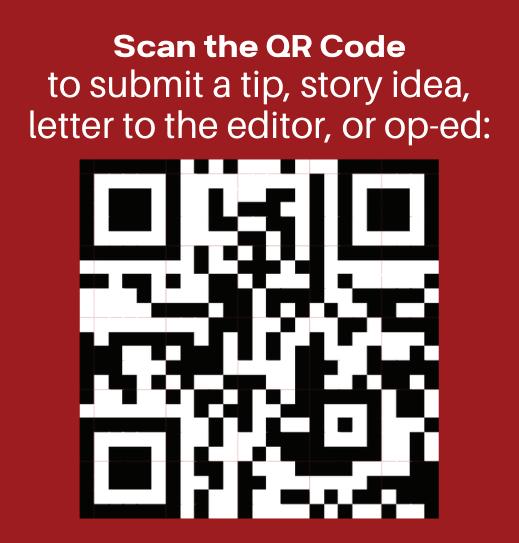
PROFESSOR BRENDAN ENGLOT HAS BEEN RECOGNIZED AS A LEADER IN UNDERWATER AUTONOMOUS NAVIGATION. COURTESY OF STEVENS.EDU
Masthead
Volume CXXI No. 9
Executive Board
EDITOR-IN-CHIEF.....................................ISABELLA ZIV ‘25
BUSINESS MANAGER...........................TANYA AVADIA ‘26
MANAGING EDITOR..............JEREMIAH CHINWENDU ‘25
LAYOUT EDITOR...............................JIYA JAISINGHANI ‘27
OUTREACH CHAIR.........................................AVA WANG ‘25
DIGITAL MANAGER..................................ABBY JACOBS ‘27
SECRETARY.........................................NICOLE GIARDINO ‘25
HEAD COPY EDITOR....................EVAN PAPAGEORGE ‘26
Editorial Board
NEWS EDITOR........................................BEN KNOBLOCH ‘25
SCIENCE EDITOR.................................RIYANA PHADKE ‘27
OPINION EDITOR...................................TASHA KHOSLA ‘25
SPORTS EDITOR...............................RUTHIE MULLISKY ‘26
FEATURES EDITOR..................................TIANNA SPITZ ‘27
PULSE EDITOR.......................................MIA PETROLINO ‘25
Operations Board
HEAD PHOTOGRAPHER RAFAEL LEE LI ‘25
Layout Team
ASSIS. LAYOUT EDITOR...........................SHREYA ROY ‘27
ASSIS. LAYOUT EDITOR...............EILIYAH SAROWAR ‘28
DELIVERY BOY.........................................JONATHAN LAI ‘28
Staff & Contributors
Fiona Shi
Josephine Choong
Jeylan Jubran
Amelie dela Cruz
Erin McGee
Camryn Winant
Charlie Beall
Abby Thomas Prisha Vagvala
Madison Heller Kevin Castner, Jr.
Stephen Pachucki Jack Scherban Emily Martinez
GENERAL.........................................EBOARD@THESTUTE.COM
EDITOR-IN-CHIEF.........................EDITOR@THESTUTE.COM
ADVERTISING.............................BUSINESS@THESTUTE.COM
OFFICE.................................UNIVERSITY CENTER ROOM 216B
NOTICE A MISTAKE?
Email us at eboard@thestute.com.
All opinions and editorials reflect the views of their respective author(s). No Part of The Stute may be reproduced in any form, in whole or in part, without the written consent of the Editor-in-Chief. Cited references of The Stute are permitted.
All members of the Stevens community are able to submit a Letter to the Editor to be published in The Stute. Letters must refer either to a piece published in The Stute or to The Stute in general and must be between 400 – 800 words in length. Submit letters to editor@thestute.com with your name and title (when applicable) or using our Google form. For writers who wish to write a Letter to the Editor anonymously, please see our policy on anonymity.
The Editorial Board reserves the right to choose whether or not to publish a submitted Letter to the Editor based on a majority rule vote, and additionally reserves the right to edit letters for clarity or request authors to revise. Provided that the author approves the final version, The Stute reserves the right to edit letters according to our copy editing procedures, defined in our policies.
All members of the Stevens community are able to submit a standalone opinion piece (otherwise known as an Op-Ed) to be published in The Stute. Op-Eds must be between 400 – 800 words, but longer submissions will be considered on a case-by-case basis. To submit an OpEd please email eboard@thestute.com with your name and title (when applicable) or using our Google form (tinyurl.com/submit-t0-stute). For writers who wish to write an Op-Ed anonymously, please see our policy on anonymity.
The Editorial Board reserves the right to choose whether or not to publish a submitted Op-Ed based on a majority rule vote, and additionally reserves the right to edit Op-Eds for clarity or request authors to revise. Provided that the author approves the final version, The Stute reserves the right to edit Op-Eds according to our copy editing procedures, defined in our policies.


If you approach the UCC breezeway glass closely, you may be able to notice a pattern of small, raised, clear circles. Bird Divert is a leader in commercial options for retrofit of pre-installed, non-avian-friendly glass. Their products consist of a film,
UCC BREEZEWAY GLASS WITH BIRD DIVERT

Daily informs that the planning for the July breezeway installation, executed by the Division of Facilities & Campus Operations, began back in March and April of this year. The pilot UCC breezeway installation “presented an opportunity to test Bird Divert film in a defined area where we had reports of bird strikes.” When exploring the possibility of expanding the pilot installation to additional glass-heavy campus locations, Daily shares that the Division of Facilities & Campus Operations “conferred and consulted with the American Bird Conservancy, [and] the National Audubon Society on selection of effective bird deterrent products.” They additionally consulted with commercial real estate owners and managers in the surrounding area that have performed similar installations on their buildings to gain further insight into their experiences and perspective on product effectiveness.
The Bird Divert installations on campus began expanding in October, with initial work starting at Babbio Atrium. A new solar film installation was due to address HVAC study concerns regarding overheating and sunglare within the Atrium, informs Daily, who adds, “Given that bird strikes on campus were under review, it was an opportune time to add and install bird divert film along with solar film to the atrium glass.”
Both film additions to Babbio Atrium mark a positive shift towards a more sustainable campus with decreased HVAC energy consumption and minimized impact on local wildlife. Daily confirmed that both bird deterrent films and glass are eligible for LEED points for both new construction and existing buildings. Solar window film alone can provide LEED credits in six different categories: energy performance, light pollution reduction, glare reduction, thermal comfort and innovation.
With the new construction of Davis Residence Hall’s replacement looming on the horizon, conversations around campus sustainability initiatives and infrastructure desires are highly pertinent. Daily confirmed that
The
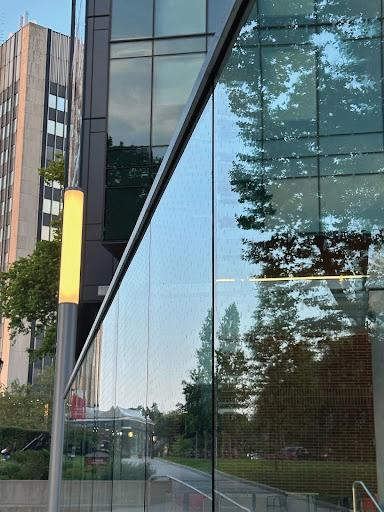

avian glass products will be considered for all new construction projects. Bird-friendly windows, which are even less visually obtrusive than decals such as Bird Divert, are commercially available from companies such as Guardian Glass, Feather Friendly, Viracon, and more.
Low rise buildings, or those that range from four to 11 stories, are a construction height commonly found on college campuses, but are unfortunately the most dangerous construction height for birds, with a median annual mortality estimated as 339 million, or 21.7 birds per building. Preventative actions such as Bird Divert film installation place Stevens among a number of innovative universities making the positive leap to preserve their campus’s wildlife. The Division of Facilities & Campus Operations has continued expansion of Bird Divert to additional campus buildings, such as Howe this month. Additional glass-heavy areas, such as the Gateway and Morton-Kiddie-Peirce bridges, have been identified as potential
future locations by the Division of Facilities & Campus Operations, Daily informs that their implementation will be prioritized as funding becomes available. Daily reports that the cost of material per square foot ranges from $7 to $12 depending on the specific type of Bird Divert product used.
In July 2024, 14-year-old Hoboken resident Otys Train was awarded $5000 as a part of Hoboken’s Youth Climate Action Fund for his “Bring Birds to Hoboken” project. He used a portion of his grant money to purchase anti-collision film for use on the ground floor of the UCC. On October 11, a pilot installation of the film Otys supplied was performed, with wider application of the film pending on results of the pilot test. Daily informs that students interested in learning more may contact the Division of Facilities and Campus Operations. Frank LoCastro is the Assistant Vice President for Facilities and Campus Operation. If Mr. LoCastro is not available and assistance is required, an email may be sent to workorder@stevens.edu.
BABBIO WINDOW PANES IN THE TOP SIX ROWS WITH THE SOLAR FILM AND BIRD DIVERT, WHILE THE BOTTOM FOUR ARE PICTURED WITH JUST BIRD DIVERT AS OBSERVED ON OCTOBER 2, 2024. AVA WANG FOR THE STUTE
RA CONTINUED FROM PAGE 1
role model for new RAs, and then create space for other students to achieve this same experience,” Nolen said.
NAVAL
CONTINUED FROM PAGE 1
varying degrees of uncertainty, unlike traditional reinforcement learning, which only considers expected outcomes.
The project will unfold in three primary stages. During the initial stage, Stevens Ph.D. students will develop systems that allow USVs to tackle diverse and demanding tasks in unpredictable conditions. In the second stage, the team will focus on managing multiple USVs as a coordinated fleet, enabling them to work together effectively. Finally, the vehicles will undergo rigorous testing, moving from basic 2D and 3D simulations to real-life environments.
One unique aspect of this research is Englot’s approach to training these vehicles in low-fidelity and high-fidelity simulations. These dual training environments maximize the adaptability and effectiveness of USVs in real-world missions, paving the way for safer, more efficient fleet operations.
Englot’s project will also fos -
Through these updates to the RA program, Residential Education aims to maximize leadership opportunities for undergraduates. Students interested in becoming an RA should plan accordingly and attend the last information session to continue with the process.
ter collaboration with other Navy-funded researchers and naval personnel who bring valuable insights into mission needs and strategic challenges. This collaboration enhances the research’s applicability and could accelerate the deployment of USVs in critical Navy missions.
“I hope that our research will allow USVs to perform key tasks in mission-critical situations in the most challenging environments,” Englot said. “Beyond advancing this essential technology, it also promises to improve our understanding of coastal ecosystems and infrastructure and, ultimately, keep more humans out of harm’s way.”
As the director of the Stevens Institute for Artificial Intelligence, Englot’s work embodies Stevens’ commitment to innovation and real-world problem-solving. This ambitious project could revolutionize the Navy’s ability to deploy USVs, making coastal and marine operations safer and more efficient. Through projects like these, Stevens continues to play a vital role in advancing autonomous technology for critical national and environmental needs.
SICKLE
CONTINUED FROM PAGE 1
allowing the new, modified cells to take over. On September 11, doctors reinfused the modified cells into his body. Of course, the therapy was not easy. Cromer began experiencing symptoms such as mucositis, a painful inflammation that causes sores in the mouth and intestines. His tongue swelled, leaving him unable to speak, and the pain spread to his stomach. Gradually, over the 44-day period, his swelling reduced. Due to the constant blood transfusions, Kendric has to undergo regular bloodletting in order to reduce the amount of iron in his body to prevent organ damage. The chemotherapy also left his immune system weak, requiring Cromer to get re-vaccinated with childhood vaccinations and avoid crowds while he recovers.
Bluebird Bio has estimated that it can only treat between 85 to 105 patients per year. Children’s National Hospital stated that it can only treat 10 patients. Even still, families are lining up for the potential of being sickle cell free.
Deb Cromer, Kendric’s mom, noted, “To see the light at the end of the tunnel and know that our child is the first to experience it outside of research – to know that it’s safe and the doctors here believe in it. I would go to the end of the earth to make sure he was cured. There’s nothing I wouldn’t do for my son, but this makes me proud.”
Kendric has recovered well but will continue to be monitored postgene therapy.

welcome you to our table where every flavor tells a different story
NOVEMBER RAFFLE
Fall into the flavors of Autumn! To celebrate the season, those who redeem a Pi Kitchen voucher will be given a raffle ticket to enter for a chance to win a lunch for you and three guests! The winner will be announced on our Instagram story S




Voting Information for the 2024 election
When do I vote?
Early voting is currently available, but Election Day is November 5, 2024.
Am I registered to vote?
If you registered to vote in NJ by October 15 or another state by their respective deadline, you are eligible to vote. You can check your registration status at: www.nass.org/can-I-vote/voter-registration-status
What do I need to bring to vote?
If you’ve voted in New Jersey before, you don’t need to provide ID to vote and you can just show up to your polling place. If you’ve never voted before in your county and didn’t provide an ID when you registered, you’ll need to bring a valid ID to the polling place. This can include a NJ driver’s license, US passport, military or other government ID, student ID, or employee ID.
Where can I vote?
You can find your designated polling place on the NJ Division of Elections website using the address you registered to vote with.Polling places will be open from 6 a.m. to 8 p.m. https://voter.svrs.nj.gov/polling-place-search
Who can I vote for?
There are a number of races New Jersey residents will have a say in, including the Presidential contest between Vice President Kamala Harris and former President Donald Trump.
This year also includes the congressional race for New Jersey’s 8th district between Rob Menendez Jr. (D) and Anthony Valdes (R). Andy Kim (D) and Curtis Bashaw (R) are vying to fill the open U.S. Senate seat previously held by Bob Menendez since 2006.
Locally in Hudson County, incumbent Democrat Tilo Rivas is defending the Surrogate seat from Republican challenger Juliana Lombard.
Why should I vote?
Students should exercise the right to vote as it is a fundamental aspect of civic engagement that allows them to participate in the democratic process, hold elected officials accountable, and advocate for their interests and values as future leaders of society.
Where can I learn more about voting?
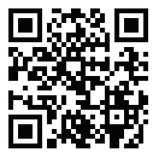

A guide by News Editor Ben Knobloch
Walkable cities paving the way for a greener society
BY AMELIE DELA CRUZ, STAFF WRITER
Undoubtedly, one of the main perks of student life at Stevens is the easy access to bustling cities like New York City, Jersey City, and Hoboken itself. At the heart of these cities is the fact that everything can be reached by foot, train, or bus. This is not the situation everywhere, though; many urban and suburban areas are still reliant on cars as the main mode of travel due to a lack of mass transit infrastructure. The damaging effects of cars on the climate are being amplified, and at the same time, people are advocating for more public transit options. In a place where the effects of climate change are prominent, efforts to stop its advancement or even reverse the effects are necessary. However, by taking advantage of local transportation initiatives or even continuing to walk and bike, these effects of climate change can be greatly reduced. Transportation is the largest contributor to greenhouse gas emissions in the United States, according to the Environmental Protection Agency (EPA). Within that, 57% of those emissions come from private transportation like cars and SUVs. When measuring the carbon emissions of different forms of transportation in pounds of CO2 produced per mile
traveled per passenger, there is a stark difference between car and train emissions. According to the US Department of Transportation, cars release about a pound of CO2 on average, which is about four times as much as the average heavy rail.
Besides emissions, there are other factors to take into account regarding forms of transportation. Land usage is another environmental concern; when highways are built, forests and other natural habitats must be torn down to make space. Highways and other roads take up a large amount of space but still require a greater distance to reach a destination than public transportation. Contrastingly, public transportation is a form of high-density development, so less land can be used to travel a greater distance. Although there are fewer mass transit options in less populated areas and, therefore, a greater reliance on cars, it is entirely possible to forgo car usage entirely in more densely populated areas. The environmental benefits of walking and biking greatly outweigh the possible convenience of driving. As was stated by former mayor Dawn Zimmer, “[the city is] trying to make Hoboken a place where people have the option to live car-free.” In a walkable city like Hoboken, some benefits include decreased air pollution,
minimal land usage, and more active use of space. When land is used for people rather than cars, there is a greater emphasis on using public spaces like parks. Within these parks are plants that actually have a cooling effect on the environment. Meanwhile, paved roads can increase the city’s temperature due to the absorption of heat.
Luckily, there are plenty of transportation options with low to no carbon emissions in Hoboken. In fact, the city once boasted public transportation usage at 56 percent among commuters living in the city. This is thanks to PATH, NJ Transit, and the NY Waterway, which provide travelers with a plethora of services. Additionally, walking and biking are common ways to get around short distances. The Citi Bike program in New Jersey was launched in 2021 by Mayors Bhalla and Fulop of Hoboken and Jersey City, respectively. With over 800 bikes across the two cities, it is not only sustainable but it is an efficient and accessible way to travel.
So, the next time you’re walking down Washington Street or taking the ferry to Midtown, take a moment to appreciate not only the world around you but also the fact that you’re doing your part to create a greener society.
Nobel Prize in Physics awarded for neural networks
BY ERIN MCGEE, SCIENCE WRITER
In 1981, at California Institute of Technology, physicist John Hopfield worked with his colleagues Richard Feynman and Carer Mead to create a new course for students that would cover some of the most recent technological advances called “The Physics of Computation.” It was one of the first classes of its kind and was the forerunner to many university programs in computer science that are so familiar to us today. This field was new to Hopfield, as it was to many physicists who had spent much of their career before this working on solid-state physics and DNA synthesis.
Using his previous experience in biology, Hopfield tied together the concept of neural networks in our brains with the development of computational models, developing the Hopfield network in 1982. This model is a kind of associative memory made up of a single layer of neurons, where each neuron is connected to every other neuron except itself. The network is able to save and recreate patterns by using the atomic spin of the network’s material, which basically turns each node into a magnet. Saved images require low energy to move through the network, creating ‘memory,’ which allows the network to fill in data from a distorted or incomplete image. This development was the forerunner of modern artificial intelligence networks that use a similar structure of nodes to work.

Around the same time, computer science professor Geoffery Hinton took Hopfields’ work and expanded on it. Hinton popularized the Boltzmann machine, a model that uses statistical mechanics techniques to model random processes. This type of model can be used to build a network that recognizes a characteristic of data, which is trained by feeding examples to the model and then testing how well it can categorize the different objects . More recently, in 2012, Hinton and two of his graduate students at the University of Toronto built a system that could analyze thousands of photos and teach itself to recognize and categorize common objects like flowers and cars. Hinton carries the title of being called “The Godfather of AI” for this work, and he and his students moved to Google to expand their
Electrical sutures offer an innovative new way to heal wounds
BY EVAN PAPAGEORGE, HEAD COPY EDITOR
In regenerative medicine, electrical sutures have emerged as a groundbreaking technique in muscle healing. They offer an innovative way to repair injuries faster and with less risk of complications. Traditional suturing techniques rely on mechanical stitching to close wounds and promote healing. This new approach leverages low-level electrical currents to enhance tissue repair, showing significant promise in clinical settings.
Researchers at the University of Wisconsin–Madison, led by biomedical engineer Xudong Wang, have pioneered the use of “electroceutical” sutures. These electrically conductive sutures emit a small, continuous electric current across the wound site. The current design allows for the stimulation of cellular activity to
accelerate tissue regeneration, reduce inflammation, and minimize the risk of infection. The findings, published in Science Translational Medicine, demonstrate that these sutures can improve muscle repair speed and quality, making them a valuable addition to the toolkit for treating severe wounds. The mechanics of electroceutical sutures capitalize on the body’s natural healing processes. When a muscle is injured, the body initiates a series of responses to remove damaged cells and form new tissue. However, this natural process can be sluggish for large or complex wounds, and extensive tissue loss can impair recovery. Electrical sutures expedite this process by creating an electric field that encourages cells to migrate and proliferate more effectively at the injury site. By increasing the movement of cells crucial to repair, such as fibroblasts, the sutures promote
faster tissue growth and reduce the duration of inflammation, a common contributor to scar tissue formation.
In animal models, the healing time for muscle injuries treated with electrical sutures was substantially shorter than that for those treated with traditional sutures. Within two weeks, wounds treated with electroceutical sutures showed significantly improved muscle fiber alignment, a key factor for restoring muscle function, and reduced levels of fibrous scar tissue. This effect was not only limited to the superficial repair; electrical stimulation penetrates deeper muscle layers, ensuring comprehensive healing across the affected area.
One of the standout benefits of electroceutical sutures is their potential to reduce post-surgical infection. Traditional sutures are often associated with a higher risk of infection as bacteria can
colonize the stitching material. Electrical stimulation helps inhibit bacterial growth, making the environment around the wound less hospitable for pathogens.
The continuous current serves as an antimicrobial defense, reducing the risk of complications and promoting a safer recovery for patients.
The potential applications of electroceutical sutures extend beyond muscle repair. Research suggests possible use in other types of tissue repair, including skin and nerve cells, with implications for wound healing and regenerative medicine. The technology aligns with a trend toward electroceuticals — medical devices that use electric signals to treat medical conditions. These devices are part of a field that could offer alternatives to drugs and surgery, making healing processes more efficient and less invasive.
As electroceutical sutures con-
work in this area.
Now, Both Hopfield and Hinton are sharing the Nobel Prize in Physics for their work in physics-inspired artificial neural networks. The Royal Swedish Academy of Sciences, which chooses the awardees each year, announced earlier this month that the award would be given for the development of power methods that laid the foundation for modern machine learning, including creating an associative memory that can store data and find properties from that data.
Along with the incredible accomplishment, the laureates have shared their concerns about their own innovations. Hinton shocked the computational community when, in 2023, he quit his job at Google, where he had been working for more than a decade, in order to speak more freely about the dangers of AI. Hinton said in an interview that he now regrets his life’s work, arguing that it is hard to prevent bad actors from using it to do bad things. “I console myself with the normal excuse: If I hadn’t done it, somebody else would have,” Hinton said.
Hopfield also promotes caution in this field, saying: “The world doesn’t need unlimited speed in developing AI. Until we understand more about the limitations of the systems you can make — where you stand on this hazard ladder — I worry.”
Some in the physics community have made the argument that the prizewinning work was in computer science, rather than in physics. Hopfield responded to this, saying: “My definition of physics is that physics is not what you’re working on, but how you’re working on it. If you have the attitude of someone who comes from physics, it’s a physics problem.”
Hopfield, now in his 90s, and Hinton, 76, see themselves as passing the field on to a new generation of researchers. Hopfield also stresses the importance of interdisciplinary learning and the importance of uniting different fields. When asked if he had any advice for PhD students, Hopfield pointed out how important it is to see the intersection points of different areas in order to solve problems: “I’ve always found the interfaces interesting because they contain interesting people with different motivations, and listening to them bicker is quite instructive.”
tinue to improve, the focus shifts to human clinical trials. Researchers are still optimizing the current levels and testing long-term safety to ensure the technique is suitable for human applications. However, given the technology’s early success, they are optimistic that electroceutical sutures could revolutionize how doctors approach muscle injuries and, eventually, a broad spectrum of surgical procedures. With these advancements, electroceutical sutures have the potential to bring patients a new standard of care, offering faster, cleaner, and more effective recovery from injuries that would otherwise require lengthy and often painful healing periods. As electroceuticals gain traction, they represent a shift in how we think about recovery and an exciting step toward more innovative, bio-compatible medical technologies.
PHOTO COURTESY OF HATTIN CONSTRUCTION MANAGEMENT

Field
Hockey makes
a

comeback against Lebanon Valley College after a loss against Arcadia
BY CAMRYN WINANT SPORTS WRITER
On October 23, the Ducks faced Arcadia University in Glenside, PA, and Lebanon Valley College on October 26, back at DeBaun. Despite their best efforts, the Ducks took a 2-4 loss against the Knights but came back with a 1-0 win against the Dutchmen.
In the game against Arcadia, the Ducks took a 2-0 lead against the Knights early in the second quarter of the game, but after allowing one point in the third quarter and three more points in the fourth quarter, the Knights ended with the victory. The first quarter of the game was goalless for both teams and shotless for the Ducks,
with junior goalkeeper Lily Wierzbicki making three saves. The second quarter allowed for shots on both sides and after their first few shots, sophomore Jess Kopernick knocked on the first goal of the game. They entered the third quarter with a 1-0 lead, which was doubled early in the quarter from a shot by sophomore Molly DiCampli. Shortly after, the Knights scored, but the Ducks still held their 2-1 lead by the fourth quarter. Despite the Ducks outshooting the Knights 5-4 throughout the period, the Ducks were held goalless, and the Knights managed to score three. Despite ending with a loss, Kopernick was able to score for her fifth time in seven games which
passed her total from last season, and Wierzbicki made five saves, which was her highest in the last seven games.
The Ducks traveled back to Hoboken to host Lebanon Valley for the Mental Health Awareness Game. With shots made by senior Sarah Korczukowski and junior Gabi Moroney, sophomore Sophia Cozza and Kopernick, and saves made by Wierzbicki, both sides did not score for more than half the game. The Ducks continued to be ruthless with their shots, and in the 40th minute, Moroney was able to tip the ball into the net, giving Stevens the singular goal. More shots were attempted on goal, but the Dutchmen’s goalkeeper was able to keep them out. The Ducks
Men’s Soccer wins back-to-back against Arcadia and Lebanon Valley
BY CAMRYN WINANT SPORTS WRITER
On October 23 and 26, the men’s soccer team went up against Arcadia University and Lebanon Valley College. Stevens took wins over both of the games, with ending scores of 2-1 and 1-0.
The first game was against the Knights, and Stevens took control very early on. Shots were made by juniors Kyle Rothwell, Ethan Hagen, and Ben Goldberg in the first period. Halfway through the first period, the Knights were able to pull through with a goal after first-year Martin Fields got a yellow card. With more shots from graduate student Dylan Maund and senior Emerico Vespucci, the first 45 minutes came to a close. Despite the Ducks outshooting the Knights, they still went into the second half with no goals. In the 80th minute of the game, Rothwell tipped in the tying goal of the game off a pass from Fields. Shortly after, in the 85th minute of the game, senior Tomas Marti-
ni knocked in the game’s winning goal and his second career goal.
The game ended with the Ducks outshooting the Knights 25-4, with five of those shots made by Rothwell, four by Vespucci, and a pair of shots both made by Martini and Goldberg. Rothwell, who had missed nearly a month of play due to an injury, scored his second goal in three games, along with Marti ni, who scored his first goal since September 2023.
When the Ducks went up against the Dutchmen, the game was left entirely goalless until the final 93 seconds when senior Luca Campbell scored the singular goal.
This win advanced the Ducks to a 5-0-0 record in Middle Atlantic Conference (MAC) Freedom play. The Ducks went hard with shots early on, making three shots on goal in the first six minutes. They went back and forth throughout the period, only making minimal shots on both sides. Unlike the first half, the Dutchmen came back in the second half with six shots, though they were not on goal. Af-
held the Dutchmen shotless in the last 15 minutes, ending with a shutout win. It was a big game for Moroney as the only goal scorer with seven shots on goal, giving her a season-high. Coming off the win against Lebanon Valley, head coach Meredith Spencer-Blaetz said, “Solid team-win today! I was really proud of the way the team implemented some of the things focused on this week. We are putting a full game together, committing to our team game plan, and excited for this final week of regular season play!” The Ducks will be seen finishing out their regular season this Saturday, November 2, in Wilkes-Barre, PA, up against King’s College.

ter nearly a half hour with both sides going shotless, in the 89th minute, junior Max Rokhsar gave a pass to Campbell, who scored the final goal.
NOV 3
WOMEN’S AND MEN’S FENCING Drew Invitational Madison, NJ 10 a.m.
WED, NOV 6
FIELD HOCKEY MAC Freedom Semifinals Location and Time TBA
WOMEN’S AND MEN’S SOCCER MAC Freedom Semifinals Location and Time TBA
The Ducks will be seen playing their final game of the regular season on November 2 at DeBaun, hosting Misericordia University at 4 p.m.
Campbell’s goal made him the only MAC Freedom player to have three goals in conference play, and it was also the second goal Lebanon Valley had allowed in five games during conference play. It was also a big game for graduate student goalkeeper Guillermo Castaneda-Chang, who marked his fifth shutout of the season.
STEVENS SCOREBOARD

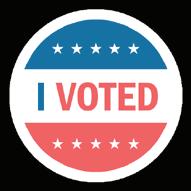
HALLOWEEKEND PT 2
PRESIDENT REVEAL PAPERS PAPERS! PICK
DAYLIGHT SAVINGS: FALL BACK! TAKE DOWN
HALLOWEEN DECOR
ALEXA, PLAY “ALL I WANT FOR CHRISTMAS”



VETERANS DAY
GRAB A PSL FROM JEFFERSON S AND CRUNCH SOME LEAVES
BINGE GILMORE GIRLS
FRIENDSGIVING PREP LET THE COOKING BEGIN
LET S DO THE TURKEY TROT


FRIENDSGIVING WEEKEND
GET ME OUTTA HERE
THANKGIVING BREAK!!
THANKSGIVING FOOD COMA


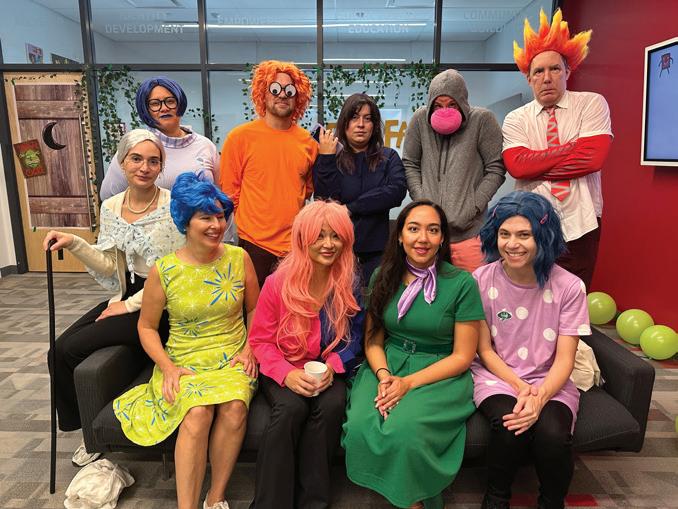




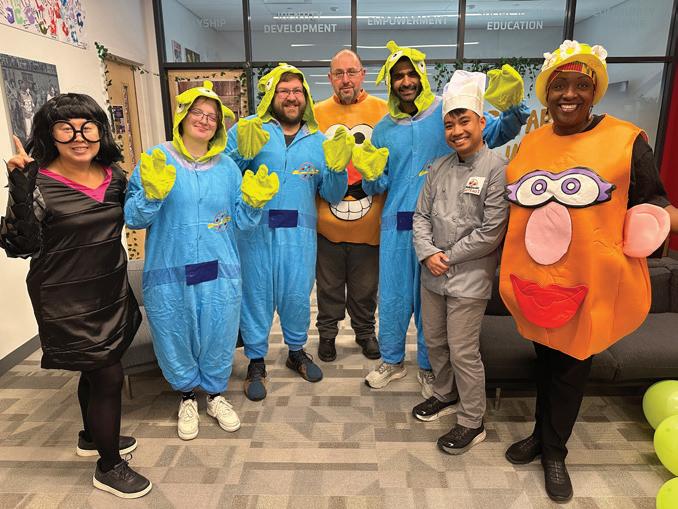
POST-MIDTERM TLC

How to stay healthy in Stevens’s battle against frat flu
BY JOSEPHINE CHOONG, STAFF WRITER
It’s that time of year again. When the hallways are filled with coughs and sniffles, it means the frat flu is back. Especially during midterms, it’s important to stay on top of your health. To help you fight back, Stevens has a large variety of resources, from free yoga to flu shots, to support your physical and mental health.
Frat flu describes symptoms like coughing and runny nose that often happen after college party scenes. It doesn’t have an actual medical definition because students are actually experiencing the common cold. Due to dorming, larger class sizes, and packed social events (especially parties), students are more likely to interact with someone infectious.
The Stevens Student Health Services provides services like health promotion, disease prevention and treatment, and referrals to outside providers when appropriate. They are located in the Student Wellness Center, next to

North Hall, and are appointment only. Appointments can be scheduled through the Healthy Stevens Portal or by calling 201-216-5678. Their office hours are 9 a.m. to 4 p.m., Monday through Friday. For medical emergencies, you can contact the campus police at 201216-3911 to receive an immediate response.
There is no charge for treatment at Student Health Services, but students are responsible for paying for off-campus tests, medications, and referrals. Services like shots at Student Health Services must be paid with DuckBills. There is no charge for students with Aetna Student Health Insurance. Students with private insurance must use the Healthy Stevens Portal for a receipt copy to file for reimbursement with the insurance company. Some shots and tests include the flu shot ($20), COVID-19 rapid test ($10), and Hepatitis B immunization ($35$75).
Moreover, it’s necessary to maintain a healthy diet. You can contact Carmine Ingenito, Ste-
BAFFLING BITS & BOBS
vens’s Registered Dietitian, at dietitian@stevens.edu or schedule appointments to improve your relationship with food and nutrition. Meanwhile, Pierce Dining Hall has various events promoting wellness, including Wellness Wednesday and Feel Good Foods. However, that doesn’t mean you should forget about your mental health, especially during the stress of midterms. During the 2024-2025 academic year, students can receive free yoga classes from Asana Soul Practice. While mats aren’t provided, you can bring your own or rent a mat for $3. Students can attend one class per day and must pre-register online. If you have any questions or concerns, you can contact Stevens’ Office of Counseling and Psychological Services at caps@stevens. edu.
Despite the sometimes overwhelming schoolwork, you should always remember to take care of yourself. Stay hydrated, sleep well, eat healthy, and keep your stress down. Don’t let frat flu get the best of you!
Opinion
Top pastimes for your quarter-life crisis
BY JEYLAN JUBRAN, CONTRIBUTING REPORTER
Ever have one of those weeks where everything feels like it’s spiraling, from exams and assignments to navigating social life and basic survival skills? Fear not; these pastimes are here to save the day (or at least distract you until the next exam).
1. Blogging & Journaling Spill your thoughts somewhere and get it all out of your head. There’s no right way to do it – jot down your thoughts, rant about that impossible professor, record that time you accidentally walked into the wrong class for a week, OR you could write for The Stute. Sharing your “in-progress” wisdom with fellow students might help you feel better and potentially help someone else (a.k.a. what I do).
2. Baking Whether you’ve got a communal kitchen or a microwave that’s seen better days, baking can be your creative outlet and a stress-buster. And I get it; we aren’t all quite Martha Stewart, but no worries – box mixes are the heroes we don’t deserve but desperately need. If your cake turns out to look like a pancake, it’s still delicious, and there’s no way to mess up the smell of baked goods filling your dorm.
3. Exercise Gym rats and newbies alike can benefit here. Stevens offers the usual gym setup and even women’s lifting hours to help everyone get started in a supportive environment. For those who aren’t fans of iron pumping or treadmills, the fall views on Hoboken’s waterfront will in
spire you to walk, jog, or take a moment to admire the scenery. And for those “zen” moments? Free yoga sessions; take advantage of them. If these all seem scary and not your vibe, check out the pool. It’s an easy way to take your mind off things while getting some exercise in.
4. Going Old School:
Reading or Coloring
Yes, we’re throwing it back. You might be surprised at how calming adult coloring books are (or, honestly, any coloring book — the Barbie ones are highly underrated). And reading? Well, whether it’s a mystery novel or that one book everyone was supposed to read in high school, reading transports you to another world for a bit and takes your mind off the stressors in your life.
Quick-Fix Versions for the Ultra-Busy
Thinking you have zero time to read all this? Here’s the cheat sheet:
Journaling? Five minutes.
Box mix baking? Toss it in the oven and check back in 20 minutes (study break snack!). Walks? Just one lap around the block can clear your mind. Sketching? Perfect if you need a “creative” outlet during those lectures.
But on a serious note, in the grand scheme, remember to breathe, enjoy that NYC skyline, and know you’re going to be okay. After all, college is just a chapter in your life – one full of latenight studying, caffeine-fueled epiphanies, and, of course, questionable hobbies and life choices. So enjoy it while it lasts, and just know if you need anything, Stevens offers free therapy ;)

BY
This week, we are going to touch on a more complicated concept than usual. I’d like to talk about music boxes and, as an extension, lay down the groundwork for acoustics in general. For any Music and Technology majors or musicians reading, I apologize if I botch anything here. But why talk about music in the first place? Music has always had a very important impact on my life. I often use it as an escape. I know that when I don’t know what to do—when I’ve exhausted every option and given all I can — I can still listen to music. For me, music is feeling. Sometimes, I feel it in my head or chest, sometimes in the tips of my fingers or my ears, and sometimes in my heart. There are few feelings better than resonating with a particular song or sound — feeling seen by another human being or being in a
way that transcends familiarity. But just what is resonance, and what does it have to do with music? Let’s start with the basics. Sound, as we know it, is the vibration of air molecules that vibrates our eardrums. Our brain detects those vibrations and converts them into electrical signals we understand as sound. Vibrations are oscillations, or when something or a group of things move back and forth over a certain period of time. Vibrations can be described by their frequency, which is the unit Hertz, which is the number of cycles per second. In other words, vibrations with high frequencies are moving back and forth very quickly, and those with low frequencies are moving back and forth very slowly. Every object has a natural frequency. This is the frequency at which that object will tend to vibrate when struck by something, or in the case of a guitar string plucked. Aside from its natural frequency, objects also have other special frequencies called resonant frequencies. These resonant frequencies are special because objects take on particular patterns of vibration when they vibrate at them, called mode shapes. These mode shapes contain a lot of energy, and the size of the vibrations is much larger than at frequencies other than these natural frequencies. With these concepts out-
lined, let’s return to music boxes. The natural frequency of an object is dependent on things like its stiffness, mass, and geometry. A music box has a row of metal bars with one end attached to a plate and the other end resting on a cylinder with bumps. As the cylinder spins, the bumps pluck each of the bars in a specific order. The different sounds are dictated by the natural frequencies that these bars vibrate at, which differ between them due to their differing lengths. When the bars vibrate, they vibrate the
air around them, which eventually vibrates our eardrums, allowing us to hear them. Guitar strings function in a similar way, but their natural frequencies differ depending on their thickness and how tightly they are attached to the guitar. In an acoustic guitar, the strings themselves don’t move much air or produce a lot of sound. The guitar body is shaped in such a way that the vibrations of the strings vibrate the top of the guitar, and the air inside the guitar resonates and amplifies the sound. Different guitar
shapes consequently emphasize different notes and sound distinct due to the resonant frequencies of their bodies. I think that’s what makes music so beautiful; there is something fundamental about vibrations. On a small enough scale, everything in existence is oscillating in some way or another, like waves of light. In that sense, the universe sings to us all, and we are each an instrument in this cosmic choir. Find those with whom you resonate, and you will be capable of more than you ever thought possible.

KEVIN CASTNER JR. B.S. ‘24 & M.E ‘25
PHOTO COURTESY OF MEDIUM.COM
KEVIN CASTNER
MIND OF A FRESHMAN
Babies’ first Halloween party

and in my case dressing up as a bear without getting weird looks. More known than this is Binghamton, which is famous for its parties and even more famous for its Halloweekend parties. Almost like a religious pilgrimage, college students from all over the U.S. flock to Binghamton to party in one of their Hal-
SENIORITIS

loweekend venues. In anticipation of this weekend, I bought my Rilakkuma onesie from Temu and planned my trip. After conferring with my friend, I ended up buying a round trip ticket to Binghamton University and a party ticket to Lambdas, Haunted IX party (maybe around $120 total minus all the Ubers and other miscellaneous stuff). Suffice it to say, the party did not disappoint. I had an amazing time with all of my friends taking pictures with all our costumes and dancing to 2010s pop. For anyone who didn’t have a chance or is partying the week of Halloween, be excited.
I think in the just over two days I was at Bing, my expenses including all the Ubers and food was $180 maybe? I don’t know the exact number but every dollar
was well spent. The DJs were insane, the flashing lights were great, and the vibes overall was everything I expected.
For anyone planning a trip to any college for Halloween, it is always good to buy tickets early, as tickets will get extremely expensive as time goes on. Also, don’t count on getting any good Airbnbs, especially around Bing, because many frats from around the country will buy out the Airbnbs months before. What many people, including myself, did was just crash at a friend’s dorm. Personally, I spent my night sleeping on the floor of my friend’s four-person suite. Honestly, though, if you aren’t tired enough (among other feelings, iykwim) by the end of the night to sleep on the floor, something is wrong.


BY PRISHA VAGVALA
Açaí bowls have been on my mind all week; every time I ran into my friend, Vasilisa, she almost always carried a bag with her açaí bowl. It’s been a stressful week for many of us due to midterms, but who would have thought that something as simple as an açaí bowl could be the perfect remedy to help cool our brains? So
there I was, embarking on my journey to Playa Bowls on Hudson Street, soaking up the food scenes of Hoboken, the seemingly endless restaurants and streets. On my way there, I debated whether to try one of the seasonal fall flavors or stick with a favorite I knew I’d enjoy. The fall options sounded tempting, with cozy flavors perfect for the season, but I couldn’t help but think back to the Nutella Bowl and the Stupid Cupid Bowl a friend had recommended earlier. After some back and forth, I ultimately chose the classic Nutella Bowl. There’s something unbeatable about a classic choice; it’s always comfortingly delicious. As I’m writing this after finishing my Playa Bowl, I can confidently say I don’t re-
UNMASKING: AN AUTISM STORY
My weekend actually started on a Friday at 4:10 a.m. I packed everything before I slept, so all that was left to do was do quick checks and wash up. I got out of my dorm in about five minutes and called an Uber to the Lincoln Harbor bus station so I could take a bus up to Fort Lee. Commutes like this always make me nervous, but I was confident that I allotted enough time. After I got to Fort Lee, I hopped on the 159 bus and got to the really suspicious Fort Lee bus station, which was literally on the side of the highway. Going strong on two hours of sleep, I made it onto my bus to Binghamton and knocked out for my three-and-a-halfhour journey west. I arrived at Bing around 10 a.m., where I called another Uber to take me from the Binghamton bus station to the actual univer-
sity, where I would meet her, and she would take me back to her dorm. Later in the day, we would meet up with her three other friends, two of whom came from Cornell. Around 7 p.m., we would start getting ready, and when I say it took the girls three hours to get ready, I am not kidding. The sadder fact is that I had to scroll on tiktok for most of that time. After hours of brain rot, we took some pictures and started heading to the party around 10:30 p.m. For Halloweekend parties, it is always advised to get to the party early because the lines for these parties are infamous for spanning around the block. However, we got there decently early, feeling good and in a good spot in line. After this, we went into the venue and partied the night away. At around 3 a.m., we were all tired, so we took
an Uber back. The Uber back was around $50 compared to the Uber there, which was $15; however, if you are splitting among friends, it’s actually not that bad. Literally, the second we got back to the dorm, I curled up on the floor and went to sleep. The perfect night. I rate my Halloweekend experience a 10/10. It was everything I expected and more, and I am extremely grateful to all my friends who accommodated me and let it happen. I don’t even regret missing my CS 116 quiz (sorry, Professor Akcam-Kibis). I will definitely be planning my trip earlier next year and staying longer for both the Friday parties and the Saturday parties. For everyone who didn’t have the best Halloweekend, it’s okay. There’s always next year. Until next time, though, toodles.
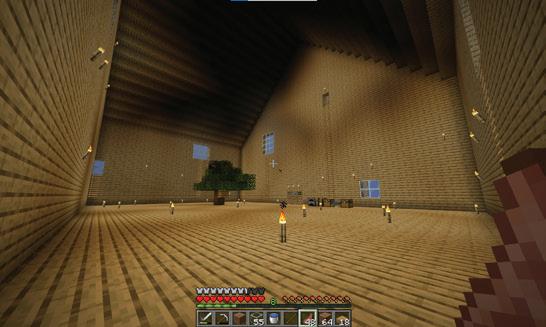

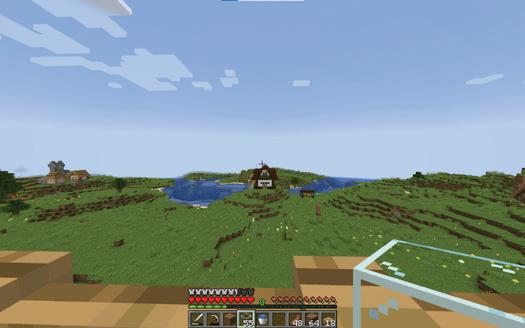
gret picking the Nutella açaí bowl. The Nutella’s hazelnut and cocoa add a smooth, slightly rich layer to each bite. The açaí base itself, with its subtle tart and berry notes, gives a refreshing contrast, and even though it turned a bit slushy when I got home, every bite reminded me of chocolate-dipped berries. The naturally sweet banana slices, crunchy coconut flakes, and strawberries on top took it to another level. This bowl has tropical flavors that bring a satisfying depth to every spoonful.
Okay, enough about the bowl; I know I get too passionate about food! The menu was so mouth-watering that it took me forever to decide what to order. Between their smoothies, fall specials, and the variety of
Playa Bowls, it was tough to settle on just one. I wanted to order three, but my Duckbills already run out every week at an alarming rate. The Fall spell special includes Apple Turn Up Açaí Bowl, Jack O’ Lantern Açaí Bowl, Pumpkin Pie Smoothie, Pumpkin Sweet Cream Cold Brew, and Pumpkin Protein Bites. The milkshake looks the most tempting to me, with the caramel drizzle on the sides of the cup and the frothy smoothie. This smoothie combines sweet banana, rich pumpkin butter, and a touch of vanilla protein for smoothness, with pumpkin flax granola and a sprinkle of pumpkin spice for a warm, spiced finish balanced with oat milk. The two seasonal açaí bowls were enticing with their autumn
Watch niche interests become a superpower and a curse with hyperfixation

BY EVAN PAPAGEORGE ‘26
In the world of neurodiversity, hyperfixation is often a defining characteristic of autistic individuals. This intense focus on specific interests or tasks can be a remarkable strength and a significant challenge. While most media (movies and TV) often portray hyperfixation as a superpower, it’s essential to unpack its complexities to fully appreciate its benefits and understand potential drawbacks.
To begin, let’s clarify what hyperfixation means. It is an intense concentration on a
particular subject, activity, or interest, often leading to extensive knowledge or skill development. For many autistic individuals, hyperfixation can manifest as a passion for topics ranging from machines and buildings (which probably led me to civil engineering) to niche historical events (like, oh let’s say, the history of Stevens), musical instruments (or many), or even random topics in case someone needs to talk to you about it (like when I learned what encephalitis was cause someone started to speak to me it about it). This deep dive into interests can foster a sense of mastery and confidence that is incredibly fulfilling.
However, this laser-like focus comes with its challenges. The same intensity that drives mastery can make it difficult to shift attention to other tasks (see the transition article of this column). Imagine a student so engrossed in
researching the weird rendition of Attila the Duck that they struggle to complete their homework or engage with peers. The world outside their hyperfixation can fade away, leaving them feeling isolated or overwhelmed when forced to pivot their attention.
Moreover, as is often the case with autism, let’s look at the social implications of hyperfixation. Autistic individuals may find connecting with others who do not share their interests challenging. Conversations can become one-sided, revolving solely around their passion, which might alienate friends or potential connections — particularly poignant in social settings where mutual engagement is crucial to building relationships. Interestingly, the brain’s wiring in autistic individuals plays a significant role in how hyperfixation manifests. Research indicates that those on
the spectrum often possess heightened activity in areas of the brain associated with deep focus and detail orientation. This biological underpinning can make it easier to hone in on specific interests while complicating the ability to juggle multiple responsibilities or social cues. The challenge lies in balancing pursuing passions and maintaining social connections and daily responsibilities. Despite these hurdles, hyperfixation can also be a powerful tool. For instance, tapping into a student’s hyperfixation in educational settings cannot only enhance learning experiences but also inspire educators. When educators incorporate students’ interests into lesson plans, it boosts engagement and allows for deeper exploration of subjects. This tailored approach can be transformative, converting what might seem like a distraction into a gateway for learning (some-
flavors. The Apple Turn Up Açaí Bowl is packed with different food elements like fresh apple slices, blueberry flax granola, and peanuts with apple butter drizzled on it, while the Jack O’ Lantern Açaí Bowl is more like pumpkin pie with pumpkin butter, pumpkin flax granola, and pumpkin spice. Besides the tropical-flavored menu featuring mango, pitaya, and coconut bowls, the shop gives off a relaxed coastal vibe, starting with its chalkboard menu framed in weathered wood. Inside, the light wood and blue color scheme are beautifully complemented by woven light fixtures and surfboards hanging from the ceiling, creating a laid-back atmosphere. One detail that caught my attention was the
anchor wall art displaying “Playa Bowl Hoboken” as you enter, which, along with the wooden chevron-patterned floor, enhances the beachy essence of the place. The service was kind, further contributing to the welcoming vibe. Considering their pineapple logo, I anticipated a calming coastal theme, but I was pleasantly surprised by how well it was incorporated into the shop’s interior. My only critiques are the high prices and the fact that there’s less açaí and more fruit in the bowls, but I suppose that’s par for the course with açaí bowls, which tend to be on the pricier side. Overall, it’s a popular spot that captures the essence of coastal living, making it the perfect escape during midterm week.
thing a history teacher did for me, and now I love history).
In the workplace, hyperfixation can manifest as exceptional expertise in a particular area, leading to innovation and efficiency. Many industries benefit from the detailed, concentrated focus that autistic individuals bring, particularly in fields that require excellent analytical skills or specialized knowledge. This unique perspective can lead to groundbreaking innovations and streamlined processes, making hyperfixation not just a challenge but a powerful tool for progress. Professionals should feel valued and integral to their fields because of their hyperfixation. So, is hyperfixation a superpower or a challenge? The answer could be more straightforward. It can be both depending on the context and the individual’s circumstances. Embracing hyperfixation means recog-
nizing its potential while developing strategies to manage its challenges. For autistic individuals and their allies, understanding this duality can lead to more supportive environments, whether at school, work or in social settings. Ultimately, the conversation surrounding hyperfixation should include more than just celebrating its strengths while overlooking its complexities. Instead, we must advocate for a nuanced understanding that embraces the brilliance and the burdens it can bring. In doing so, we foster a more inclusive society that values the diverse ways individuals engage with the world around them. This nuanced understanding is not just beneficial but essential for creating truly supportive environments for autistic individuals and their allies. It’s a call to action for all of us to commit to creating these supportive environments.
Last night, I was presented with the decision to write this column or hop on my friends’ Minecraft server. Here are some pictures of the masterpiece of a house I built:
BY AVA WANG ‘25
Exterior Design:
Interior Design:
Note the bee hive tree; a nod to the home’s sustainable construction method. All oak logs were grown in-house. Furnace and crafting table lie to the left of a gray bed.
My view of Thomas’ house.
Hi Thomas
My view of Tim’s house.
Hi Tim
P.S. Please go read my news article summarizing the Avian glass updates on campus.
‘28
FOODIE FINDS Açaí awaits
FOR MATH’S SAKE
Mathematics and democracy in the 2024 election

BY CHARLES BEALL B.S. ‘23 & PHD STUDENT
Counted Out, to be released in 2025. Counted Out explains how mathematics plays a central role in many current issues—from how democracies and elections are run to complex systems such as the healthcare industry and data collection or modeling
ON SHUFFLE
of weather and climate—yet can be a gatekeeper to success and enfranchisement for the general population, many of whom struggle to understand or outright fear the subject.
I was simultaneously deeply excited about and frustrated by this interview and documentary. It’s great that someone is bringing to light some of the major disparities we face in mathematics education, but it’s also very upsetting to me that these disparities still exist. This is all the more apparent to me as November 5th approaches, where both political parties are expecting (and in many cases promising) challenges to counting the votes and certifying the election results.
The interview looks at how many aspects of the election system in the United States allow for nefarious uses of mathematics, which has been
used throughout the country’s history to disenfranchise voters. With the Electoral College in place, it is possible for a presidential candidate to win the race despite winning only around 23 percent of the popular vote if they get enough razor-thin majorities in the right states. And since state legislators are granted the power to redraw voting districts every 10 years, gerrymandering allows for the splintering of opposition voting blocs in order to maximize wins by the party in power.
A gerrymandering case brought to the Supreme Court in 2017 was the first time in which election mathematics featured prominently in an argument to obtain a fairer district map. Multiple Supreme Court justices — both liberal and conservative — decried the arguments based on this mathematical effi-
Shameless plug on shuffle
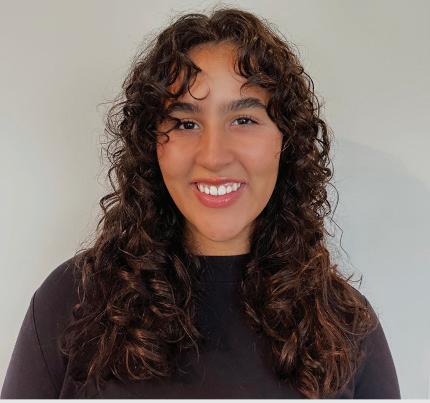
You guys know I love new music. I try to listen to new music radio stations and keep an ear out for what songs and artists are trending. Sometimes it is the artists that nobody knows yet who are the best; the artists who are waiting to find their
audiences and waiting to be discovered. My name is Abby Grace, could I be your next favorite artist?
On October 11th, 2024, I released my first album! As some would say, I am officially a recording artist. The album is called Can We Sit Together? I’ve been writing music since I knew how to talk. It started with small songs from when I was a little kid. This album consists of songs I wrote as recently as this past summer and as far back as high school. Writing music has always been a passion of mine, and I find that it just happens automatically. The genre that I write in would be a true singer-song-
BOOK OF THE WEEK
writer sound. I know this is a broad genre, but that’s the best I got. I write all of my music and lyrics. If you like artists like Olivia Rodrigo, Noah Kahan, Conan Gray, and Fun, then you might like my music. I guess musically, I write in an alternative, folky pop genre. It has always been hard for me to box myself into a genre because I find myself writing everything and anything. This album explores themes of growing up, falling in love, meeting new people, and all those exciting experiences we all go through. While trying to stay relevant and relatable, I wrote about my personal experiences
ciency gap as “gobbledygook,” and refused to side with that camp since they didn’t think the public would understand. But why exactly does the public generally not understand mathematics? It’s a hard subject, as all of us know, but I’d strongly argue that mathematics education has long been insufficient. The Supreme Court ruled segregated schooling to be legal in 1896, which led to decades of massive gaps among racial groups in learning core subjects like mathematics. This gap continues today, as people who lack access to a good math education are kept out of the higher-paying jobs, allowing discrimination to persist.
Moreover, the voting population’s perspective can become dismissive whenever mathematics comes up in political debate. The general
public was bored by Al Gore’s debate performances against George W. Bush, even though his answers reflected a solid mathematical understanding of many key aspects of government (the Electoral College and the Supreme Court also doomed Gore’s 2000 election prospects).
More recently, a majority of voters believe Donald Trump will handle immigration better than Kamala Harris. But my question is: how can Trump and his advisers consistently promise to deport 20 million undocumented immigrants when the estimated number of such immigrants residing in the country is much lower, around 11 million? I don’t understand how these basic mathematical errors (not to mention the serious human rights abuses they entail) give people a sense that this candidate
understands the issue, other than the tendency for people to tune out math whenever it comes up in conversation. Trump’s plans to pay for such mass deportations by, for instance, defunding the Department of Education would further harm the issue of mathematics education.
Both Harris and Trump speak a lot about their ability to help America thrive but haven’t focused much on education reform. I hope that the country starts valuing education more seriously as a pathway to continue American prosperity, giving future generations the necessary tools to turn into innovators and leaders. Hopefully, this increased understanding of mathematics will engender reforms in the voting process so that no one is counted out any longer.
navigating multiple different scenarios. I also pull from an imaginative place to write stories that I come up with. Not every song is a narrative, but I try to have some sort of personal relation to the songs I write.
I have a song called “Planes,” which I wrote about a year ago. This is track two on the album and is about a relationship with a friend. It is about the understanding that two people who love each other share. When one person is struggling with something, the other person can be there for them. Not only are they reliable, they can relate. This song is about being with someone
Eleanor Oliphant is Completely Fine

BY MADISON HELLER ‘27
Eleanor Oliphant is Completely Fine by Gail Honeyman is a book that I read in high school, and the memory of it still follows me around to this day. It doesn’t linger all the time but rather lurks

BY TANYA AVADIA ‘26
in the pockets of time I wish I didn’t have. When a joke or comment falls flat or when I feel deeply uncomfortable in a room full of people. It is the kind of story you think of when you are reaching out for a human connection you can never quite grasp. Eleanor Oliphant is a mentally ill and autistic woman who is deeply and profoundly lonely, yet she spends all her spare time avoiding social interaction at all costs. It was a story I found myself relating to at 16 and still compare myself to now at 19.
The reason I want to recommend this book is a little
varied. Partly, it is genuinely a good read. It hits a sweet spot that is neither too easy nor too difficult to follow, with an engaging plot with threads of mystery and romance intertwining it all together, leading into a glorious and tear-jerking conclusion that I absolutely can not spoil. When I read Eleanor Oliphant for the first time, I felt seen and in a female character to boot. Most depictions of high-functioning autism in all forms of media are in the lone male genius archetype. However, some of us are not lone wolf geniuses who don’t need anyone, who subsist entirely on
their work and a pot of stale black coffee. I’d say most of us are, like Eleanor, lonely and objectively a little strange and have no idea what to do about that. And some of us, heaven forbid, are women. But we are all completely fine. w, to me, raises the question of what we consider to be our version of fine. She believes that her existence is balanced and perfect for herself. She goes to work, speaks to no one, returns home, speaks to no one, spends her off time calling her mother in prison for 10 minutes, and promptly gets drunk alone in her apartment, rinse and
and saying, “I know what you’re going through. I am going through the same, but I will be stronger for you right now.” I wrote this song after speaking with my friends and talking about our lives. I related to them on some topics and some I didn’t. It is all about the unspoken rule between two people who love each other and how they will always be there for one another. With a cool, upbeat drum pattern and emotional lyrics, this song is definitely one of my favorites. If you liked “Coastal Kids,” then I think you might enjoy this whole album. To jog your memory, “Coastal Kids” was a single that I re-
leased back in September, which I plugged into a previous article! I am really grateful for all of my friends and family who were there for me during the process of writing and producing. If you are someone who loves their friends, is experiencing many changes right now, or just really likes emotional lyrics, then this album is definitely for you. I recommend listening to this album on your train ride home this Thanksgiving break or whenever you head home next. It is a nostalgic album that will be sure to put you in that fall mood while you sip half-cold coffee on a scenic train ride home.
repeat. I am sure many people are stuck in their routines and their daily drudgery, and it’s tolerable for us. But does that mean we are fine, or that we should be perfectly fine because it is our normal? Eleanor’s life got better when her routine was disrupted, and she started to try to interact with other people, regardless of the fear and difficulty it caused her. So, I want to close off this recommendation and reflection by asking not only to read the book (or watch the movie version when it is released at some point) but also to disrupt your routine a little. Whether that’s going to
an event on campus or grabbing dinner with a friend in Hoboken, the little disruption will be well worth it.
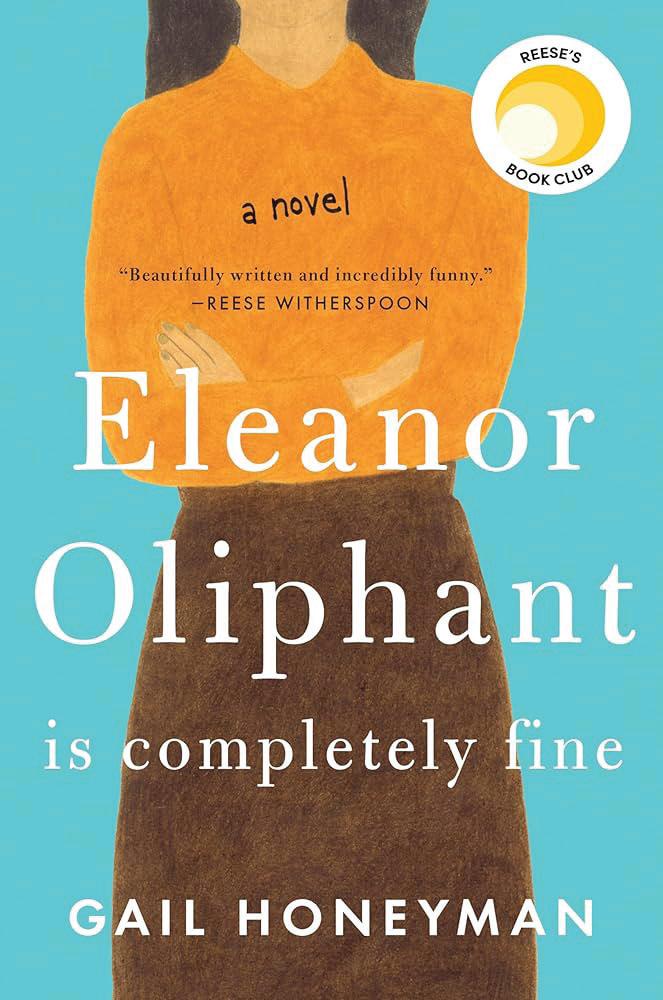
in the beauty industry with brands focusing more on inclusivity than ever before. It is also good to see how different products work differently for different people allowing you to get a better understanding of how it could work for you. Better Acceptance of Individualism: Previously, it used to be that you had to follow the norm to be accepted in society, and while that is still true to some extent, the focus on individualism has made it so that people can follow what they want. This especially applies to the beauty industry as it is a lot easier now socially to dress how you want, to do your makeup how you want if that is something you want to do, and ultimately be true to GIRL-ISH
Unfortunately, I have a bit of an issue with scrolling on social media. It is something that has become a notso-good habit that I need to break. However, the good part is that it keeps me informed about a lot of different things, such as how the beauty industry keeps trying to profit
off people’s insecurities. Now, don’t get me wrong, there are lots of good products out there, and I myself am a skincare girlie, but to some extent, I feel as though brands just keep making products as fixes to insecurities that people, and specifically women, didn’t even know to be insecure of. One prime example of this that I’ve seen recently is how there are now sprays that show you how much facial hair you have, which can help you navigate shaving it. The idea, in theory, isn’t bad, but this wasn’t something most women were initially insecure about. I’ve seen countless TikToks of women content creators buying such a product, spraying it on their faces, and being shocked at
the amount of completely natural peach fuzz their faces have. Following this, they shave their face. Again, there’s nothing wrong with shaving your face if that is something you choose to do, but in this case, it wasn’t even something that women thought of doing on their own. This is an insecurity that was quite literally manufactured, and that is what I take great issue with. On a broader scale, this proves that beauty standards are becoming more and more unrealistic, but to be fair, were they ever realistic?
I have read countless stories about how people, specifically women, indulged in harmful practices just to attain a societal standard of beauty, and our generation
is no exception. The past had women wearing corsets to give off the illusion that they had a small waist, and the present currently has people editing their photos to achieve a desired figure. The issue with both situations is that it breeds a standard that does not exist and forces people, specifically women, to dislike their natural bodies for something that isn’t even real. This can lead to self-esteem and body image issues and, in some cases, more extreme behaviors such as triggering eating disorders. This is when all the for-profits come in and try to take advantage of the situation by selling supposed fixes. Yes, some products and services can be beneficial, but many of
them are probably not.
While I have talked about the negatives of our generation’s standards of beauty, I do want to end on a positive note and state that there are some things that I believe are revolutionary to the standards of beauty and should be discussed: Wide Varieties of Bodies on Screen:
Given the age of social media and how easy and accessible it has become to have a platform, it is refreshing to see people of different body types on screen. It is more representative of people and showcases what normal bodies look like.
Diversity: Since we are a global society, it has been nice to see more diversity with-
THOMAS ‘26



ROVING REPORTER
By Rafael Lee Li
“What tickles your fancy?”
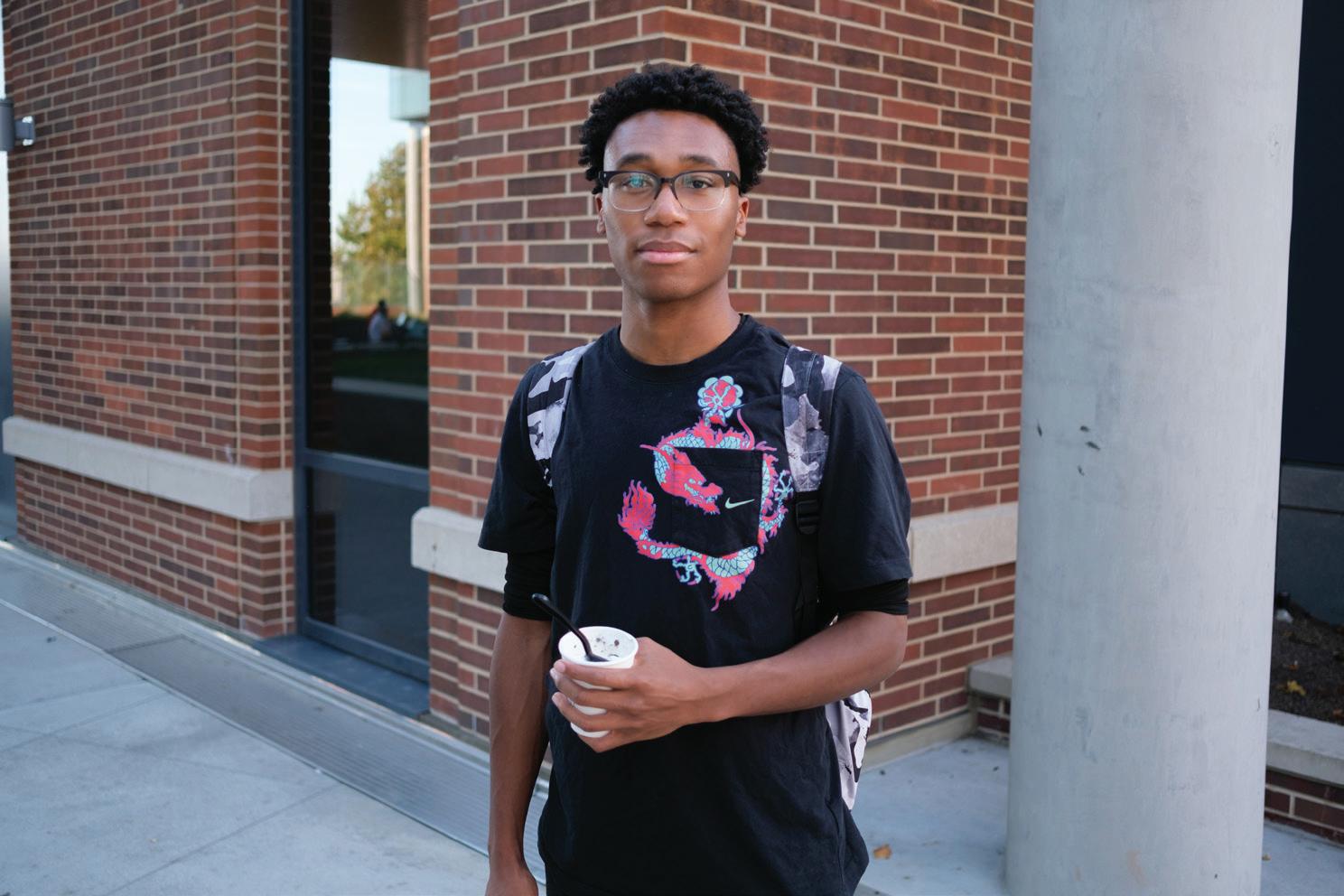


Eyes on the Prize

Sudoku
Difficulty: Moderate


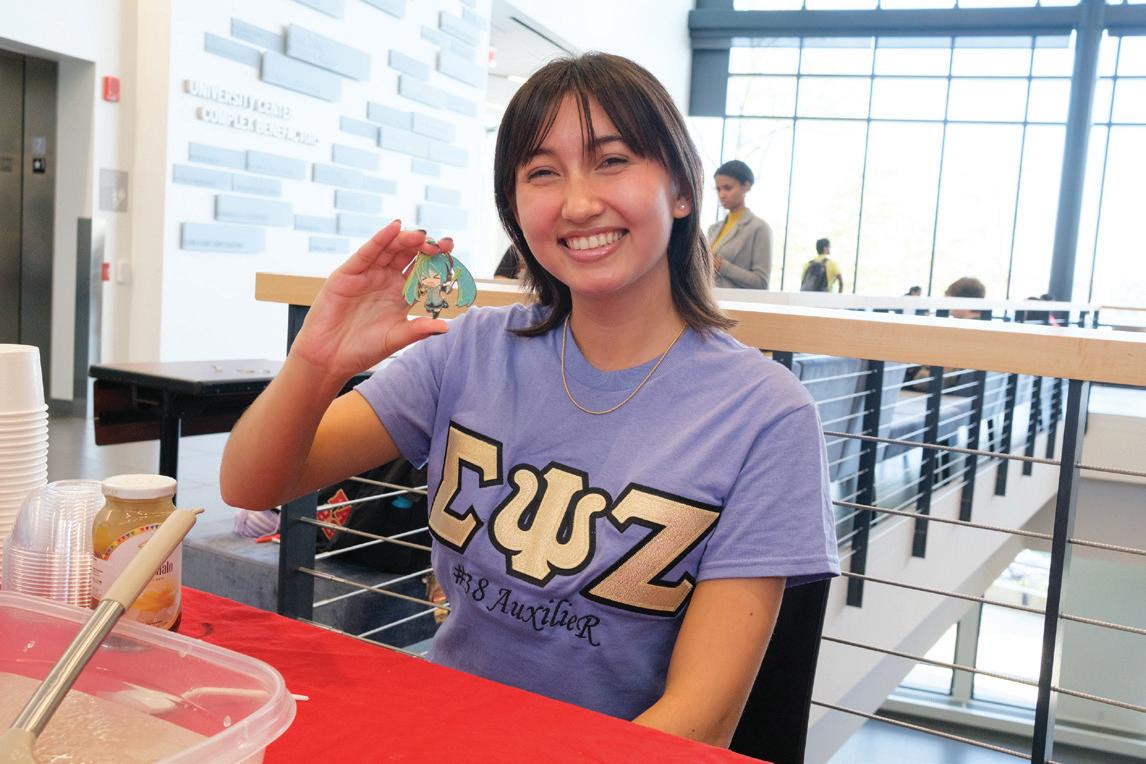
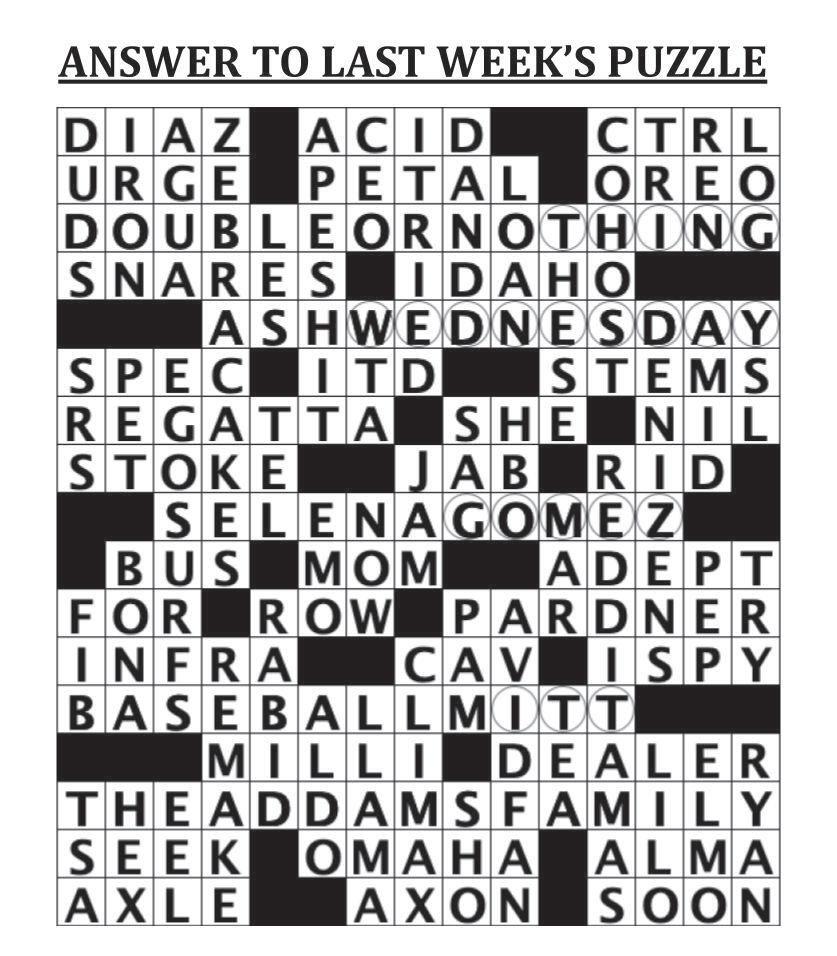
Isabella Ganguzza ‘26 “My pencil sorting game.”
Jay McKinley ‘28 “A sweet treat.”
Zeyad Eltemsah ‘24
“A free Palestine.”
Anna Zimmer ‘25 “Fungi on my mind.”
Anusha Asad ‘24 “Mixed metal jewelry.”
Alex VanderVeer ‘26 “Hatsune Miku!!”
Victoria Okonkwo ‘28 “Watching the sunset.”
Nusiba Zaman ‘25 “Finding the perfect cute-pattern skirt.”
